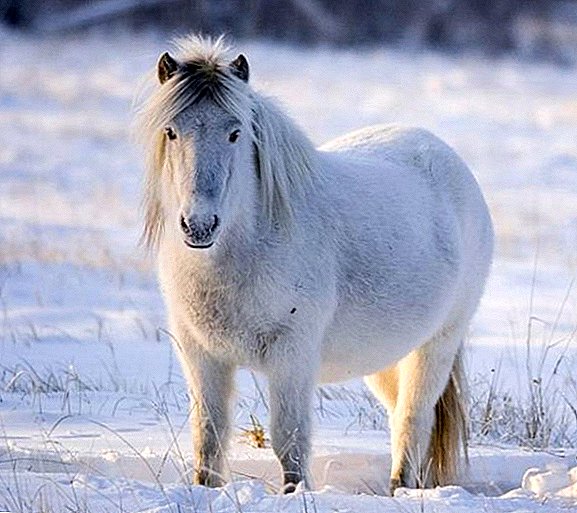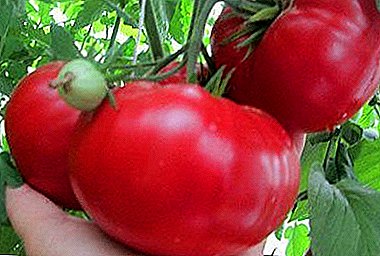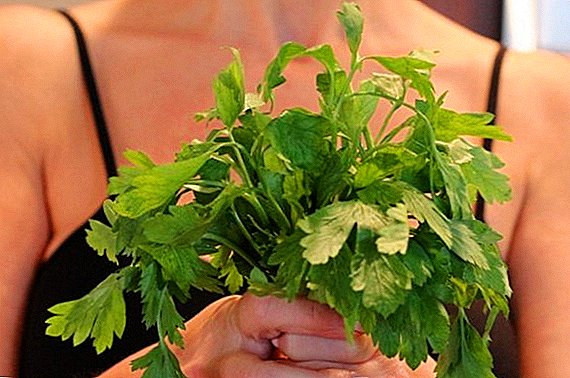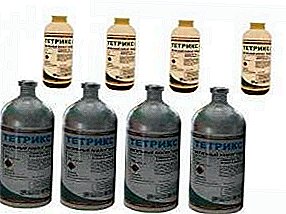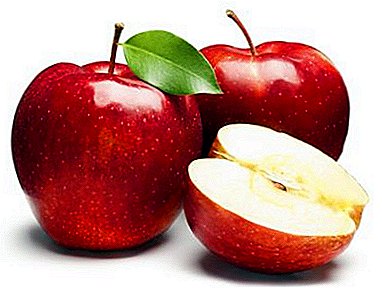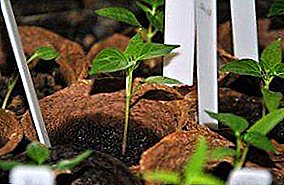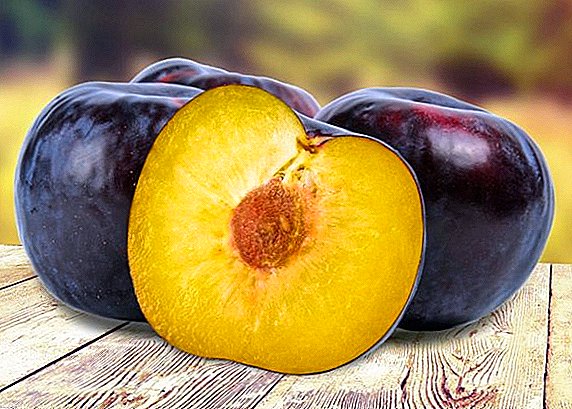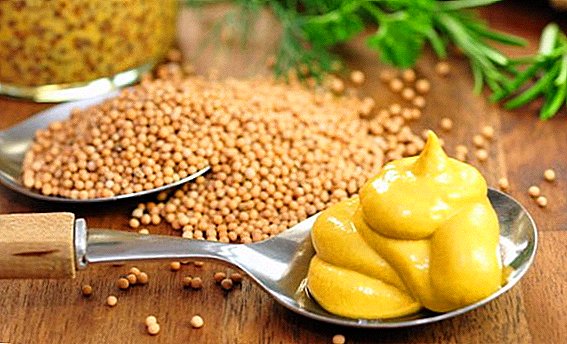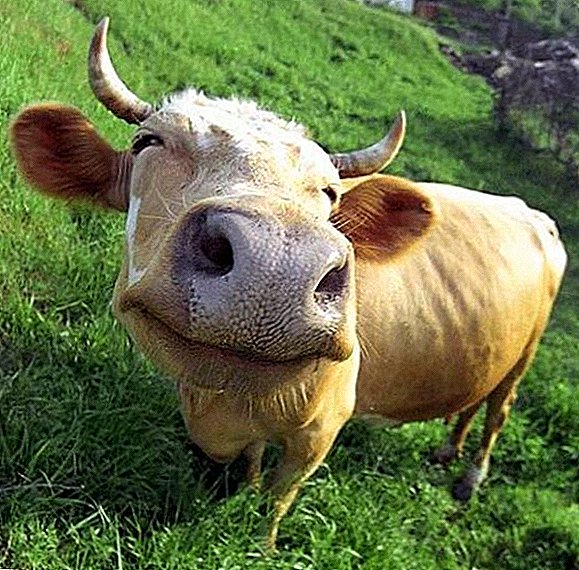 The main function of the cardiac system is to ensure the continuous movement of blood through the vessels. During the day, the cow's heart pumps more than one ton of blood. The state of cattle (cattle) and its health depend on the work of this body. How the heart of a cow works and what diseases can affect this organ - it will be interesting to know for everyone.
The main function of the cardiac system is to ensure the continuous movement of blood through the vessels. During the day, the cow's heart pumps more than one ton of blood. The state of cattle (cattle) and its health depend on the work of this body. How the heart of a cow works and what diseases can affect this organ - it will be interesting to know for everyone.
Functions of the heart of cattle
The heart is the main organ of the cardiovascular system, its task is to promote blood through the vessels of the body according to the motor principle. At the same time, blood moves only in one direction: from the veins it enters the atria, of them into the ventricles, and from there into the large arterial vessels.
One-way continuous movement of blood provides special valves. Rhythmic muscle contractions begin in the atrium, pass into the ventricles, and then - a pause. This cycle after a short break is repeated again.
The structure of the heart of a cow: anatomy
The heart is a hollow muscular cone-shaped organ, which is located in the chest cavity in the vertical vertical position between the 3rd and 6th ribs. Surrounds its own serous cavity.
Did you know? It is believed that cows see the world on an enlarged scale, and white color is best distinguished.
Atria
All mammals have a four-chamber heart, consisting of 2 atria and 2 ventricles. The atria, or atrium, are located in the upper part of the heart and occupy a small volume. Outside them from the ventricles separates the coronal groove.  In the atria there are blind protrusions - peculiar ears that increase the size of the atria. Inside the ears there are scalloped muscles, which, while reducing, provide support in absolute pushing of blood. Auricles and ventricles communicate with each other by valves.
In the atria there are blind protrusions - peculiar ears that increase the size of the atria. Inside the ears there are scalloped muscles, which, while reducing, provide support in absolute pushing of blood. Auricles and ventricles communicate with each other by valves.
Check out interesting facts about cows.
Ventricles
The ventricles, or ventriculus, occupy the rest of the heart and are located in its lower part. They do not communicate with each other and are separated by longitudinal grooves.
Valve Apparatus
It consists of valves that control the movement of blood in one direction only. They are located at the exit of the pulmonary artery (right ventricle) and from the aorta (left ventricle).
The valves pass venous blood through the right half of the heart, and the arterial blood enriched with oxygen through the left half. In the right half are tricuspid valves, and in the left - two-leaf valves. 
Fibrous skeleton
At the base of the aorta of the pulmonary trunk and 2 atrioventricular passages are fibrous rings, which are their skeleton. With increasing age of the animal, these rings hunt. In the thickness of them in adult cattle are the right and left heart bones.
In fact, the fibrous rings are the skeleton of the heart, which is attached to the muscles and valve apparatus.
Circles of blood circulation
Systemic, the largest circle of blood circulation originates in the left ventricle by the aorta and ends in the right atrium with hollow veins.
Important! Arterial blood is never mixed with venous.The small, pulmonary circle begins in the right ventricle of the pulmonary artery and ends in the left atrium with the pulmonary veins.

Heart vessels and nerves
Vessels are communicated through anastomoses. Communication can be carried out both between vessels of the same type, and between vessels of different types.
There are such anastomoses:
- arterial;
- venous;
- arteriovenous.
You will probably be interested to read about why the cow needs horns.
Due to the anastomosis, networks, collectors, and collaterals are formed (longitudinal capillaries accompanying the course of the main vessel). In addition, the heart is equipped with a vegetative nervous system. It is the sympathetic nerves that stimulate the heart. Parasympathetic branches, on the contrary, slow down the work. The heart's neuromuscular system is in close contact with the autonomic nerves.
It is responsible for the rhythm of this body and consists of 2 nodes:
- sinoatrial (located under the epicardium of the right atrium);
- atrioventricular (lies in the interatrial septum).
Pericardium (pericardium)
The heart is enclosed in this cavity. It is the pericardium that isolates it from the pleural cavities and fixes the main organ in a particular position, thereby creating optimal conditions for its work.
Heart wall layers
The cow's heart wall consists of 3 capsules: endocardium, myocardium, and epicardium.
Endocardium (inner layer)
This layer has a different thickness at different sites. In the left side, the endocardium is thicker, and in the zone of tendinous filaments - thinner.
The endocardium, in turn, consists of 3 layers. The bottom layer is called the endothelium. It is followed by a subendothelial zone, consisting of loose veins of connective tissue, and then a muscular-elastic surface, in which the fibers are connected to the muscular tissues of the heart.
Read more about the anatomy of a cow, as well as get acquainted with the features of the structure of the eyes and udder.
Myocardium (medium)
Medium, very thick muscular shell. The myocardium differs from skeletal muscle tissue in that there are interstitial crossbars between its individual threads.  This layer is formed by muscle tissue consisting of cells responsible for the functioning of nerve impulses, and cells that are responsible for the contraction of the heart muscle.
This layer is formed by muscle tissue consisting of cells responsible for the functioning of nerve impulses, and cells that are responsible for the contraction of the heart muscle.
Epicard (external)
External serous membrane. The surface of this layer is covered with mesothelium, which hides the connective tissue. It consists of loose fibers.
We advise you to read about how the teeth are located and why cows fall out.
Cattle Heart Disease
In case of malfunction of the cardiovascular system, metabolic processes and the functioning of internal organs are disturbed. Therefore, each owner should know what are heart diseases in cows and what are the main symptoms.
Pericarditis
It occurs as a result of infectious diseases, but it can be traumatic when the pericardium is injured by sharp objects. The main cause of the disease is malnutrition, which causes a metabolic disorder.
Symptoms of pericarditis:
- general severe condition;
- occasional temperature increase;
- decreased appetite;
- gum weakened or missing;
- reduced milk yield;
- increased heart rate to 100-120 beats per minute;
- the appearance of edema in the neck, dewlap, abdomen;
- rapid breathing.
Did you know? The weight of the skin of cattle is 3-8% of total body weight. The adult bull skin weighs 60-80 kg and its thickness is 2-6 mm.
Heart pushes are weakened, and sometimes absent, in the region of the heart there are noises of splashing or friction.
Treatment with traumatic pericarditis, the treatment does not work, and the cow is rejected. In case of a non-traumatic type of disease, the animal is completely restful and given light food. Antibiotics and cold compresses on the heart area provide a good effect.
In addition, drugs are used to restore cardiovascular activity:
- digitalis;
- camphor
- glucose;
- caffeine;
- calcium chloride.
Prevention. First of all, it is necessary to eliminate in time diseases that can cause pericarditis. 
Heart Dropsy
A disease characterized by fluid accumulation in the pericardial bag. Most often occurs as a complication of other diseases or in the presence of chronic circulatory failure.
Main symptoms:
- general depression;
- decrease in working capacity and productivity;
- fast fatiguability;
- swelling of the maxillary space;
- muted tones;
- reduction of arterial and increased venous pressure.
Treatment aims to eliminate the underlying disease. A sick animal is provided with a full ration, plenty of water. To reduce the accumulation of fluids, cardiac, diuretic, iodine and diaphoretic drugs are prescribed.
Did you know? The blood in the body of cows is 75-80% of their total mass.
Myocarditis
This is an inflammation of the heart muscle with the subsequent development of exudative-proliferative and degenerative-necrotic modifications of the heart muscle. Accompanied by the growth of its excitability and a decrease in contractility. Most often develops as a complication of infectious diseases, poisoning. 
The main signs of myocarditis:
- high temperature;
- depressed state;
- lack or decrease in appetite.
- tachycardia;
- extrasystole;
- full pulse of a big wave;
- enhanced heart pushes;
- raised tones;
- increased blood flow;
- high blood pressure.
- dyspnea;
- cyanosis;
- swelling;
- pronounced heartbeat failures.
Important! Myocarditis is accompanied by a malfunction of other organs - the liver, lungs, kidneys, and the digestive system.
The effectiveness of treatment depends on the severity of the disease. Cases when animals die from myocarditis are not uncommon.
Treatment first of all, eliminate the reason why the disease occurred. Sick animals are provided with rest and placed in a warm, clean room, protecting them from unnecessary manipulation, noise and irritants.  To feed and feed the cows you need in small portions and often, trying to avoid constipation. Cardiac medications should not be abused, as heart paralysis can occur. To begin with, recommend valerian. If the disease has already passed to the second stage or has taken a chronic form, apply glucose, Actovegin, caffeine.
To feed and feed the cows you need in small portions and often, trying to avoid constipation. Cardiac medications should not be abused, as heart paralysis can occur. To begin with, recommend valerian. If the disease has already passed to the second stage or has taken a chronic form, apply glucose, Actovegin, caffeine.
The following drugs are used to reduce the sensitivity of the heart muscle:
- Diphenhydramine;
- Cortisone;
- Tavegil;
- Prednisolone;
- Suprastin;
- Aspirin;
- Amidopyrine.
Did you know? Adult representatives of cattle have a mass of heart 2-3 kg
Myocardosis
Disease non-inflammatory nature, which is accompanied by dystrophic processes in the myocardium. May occur as a result of myocarditis. 
Main symptoms:
- general weakness;
- loss of appetite;
- reduction in muscle tone;
- decrease in arterial and increased venous pressure;
- reduced skin elasticity;
- mucosal cyanosis;
- swelling;
- rhythm disturbance and heart rate.
We recommend that you familiarize yourself with the symptoms and methods of treatment of common diseases of cattle.
As drugs prescribed:
- caffeine;
- glucose;
- ascorbic acid;
- camphor;
- Sulfocamphocain;
- Cordiamin.

Myocardiofibrosis
It occurs as a result of dystrophy, degeneration, or inflammation of the heart muscle with a prolonged blood supply in the myocardium.
Main symptoms:
- deafness of heart tones;
- arrhythmia;
- presence of systolic noise;
- weak pulse;
- swelling;
- dyspnea.
Important! The disease can occur for many months and even years.
Treatment first of all, the animal is provided with proper feeding and rest. 
Such drugs are prescribed:
- digitalis;
- lily of the valley;
- caffeine;
- strophanthus
- camphor oil;
- Cordiamin;
- vitamins;
- glucose;
- diuretic drugs.
Prevention myocardiofibrosis can be prevented by following the rules for keeping and operating cattle, as well as by taking timely measures to eliminate the underlying disease.
Heart expansion
A disease that is characterized by overstretching of the heart muscle, thinning of the walls and expansion of the cavities. Occurs as a result of myocardial damage.
Main symptoms:
- general weakness;
- swelling;
- dyspnea;
- mucosal cyanosis;
- frequent, weak pulse;
- increase the boundaries of heart tightness.

Treatment. patient and animal are given rest and preparations for toning the heart muscle (glucose solution, Cordiamine, Corazol, etc.). Severe intravenous adrenaline is administered and bleeding is performed.
As you can see, the heart of a cow plays a significant role in its well-being. In order to prevent and cure diseases caused by the disruption of the work of this important body, you need not only to know its structure, but also to treat your wards carefully.


